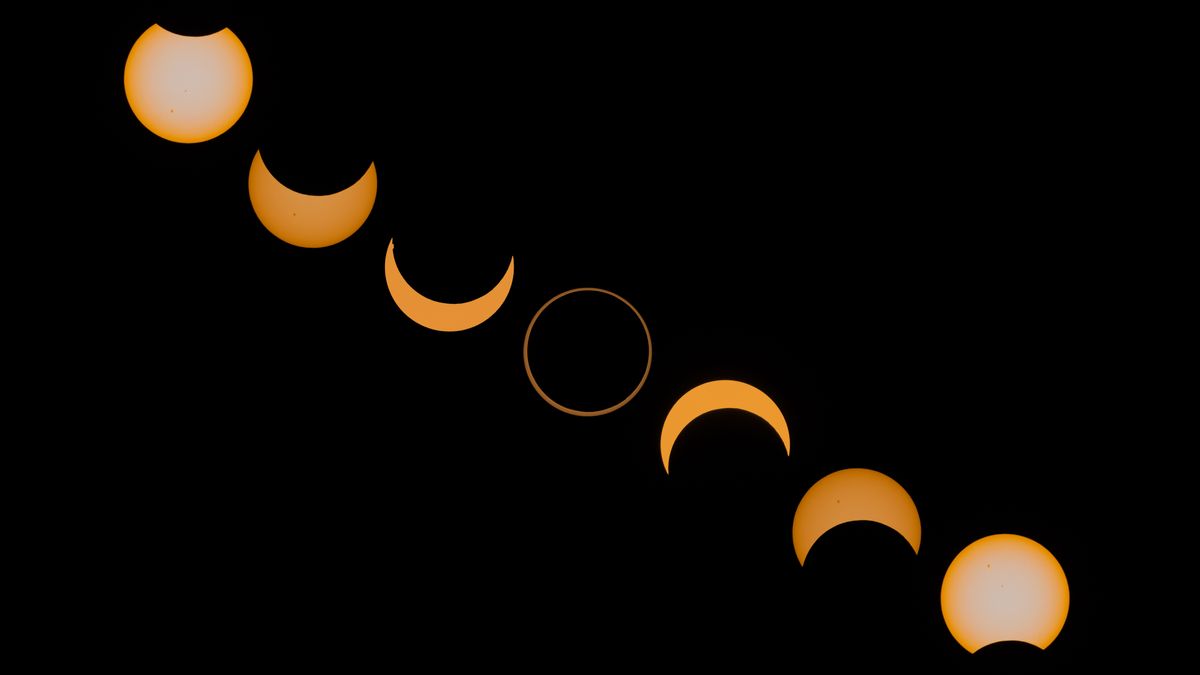 |
|
On October 2, 2024, a celestial spectacle awaits those in the right location: an annular solar eclipse. This astronomical event, known as a 'ring of fire' eclipse, occurs when the moon passes between the sun and Earth, but is slightly farther away from our planet than during a total solar eclipse. This distance leaves a brilliant ring of sunlight visible around the moon's silhouette, creating a mesmerizing sight. The path of annularity, where the ring of fire will be visible, stretches across the Pacific Ocean, southern Chile, and southern Argentina.
The eclipse's path of annularity will pass over the volcanic island of Rapa Nui, or Easter Island, a place renowned for its iconic moai statues. This isolated island, located over 2,300 miles west of the Chilean coast, will be the second time in recent decades to witness a central solar eclipse. In 2010, a total solar eclipse graced its skies, and the next total and annular eclipses are not expected until 2324 and 2345, respectively.
While the 'ring of fire' will be visible only within the specific path of annularity, parts of the Pacific Ocean and the southern half of South America will experience a partial solar eclipse. This means that the moon will partially cover the sun, creating a noticeable darkening effect. The duration of the eclipse varies based on location. For example, in Rapa Nui, the ring of fire will be visible for up to 6 minutes and 12 seconds. On the other hand, in Puerto Deseado, Argentina, the annularity will only last 3 minutes and 22 seconds. It's essential to remember that it is never safe to look directly at the sun during a solar eclipse without proper eye protection, such as solar eclipse glasses designed for solar viewing.
The article highlights several prime viewing locations for the eclipse, including Rapa Nui, Cochrane in Chile, Perito Moreno National Park in Argentina, and several locations along Argentina's Atlantic coast. It also includes information about eclipse-viewing tours offered by organizations like Sky & Telescope, TravelQuest, and AstroTrails. However, it is important to note that weather conditions can play a significant role in the viewing experience. The chances of clear skies on October 2, 2024, are relatively low for some locations, with Rapa Nui having a 75% chance of clouds, Perito Moreno National Park a 90% chance, and locations on Argentina's Atlantic coast a 65% to 70% chance.
The article concludes by providing information about upcoming annular solar eclipses. The next annular solar eclipse after October 2, 2024, will take place on February 17, 2026, with the path of annularity passing through Central Africa and Asia. It also offers links to resources for further information on eclipses, including NASA's eclipse website, EclipseWise.com, and Michael Zeiler's GreatAmericanEclipse.com. The article's comprehensive coverage of the upcoming annular solar eclipse on October 2, 2024, provides valuable information for those interested in experiencing this celestial event.
Source: Annular solar eclipse 2024: Everything you need to know about the next solar eclipse
